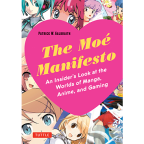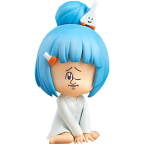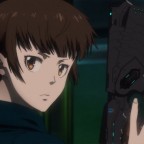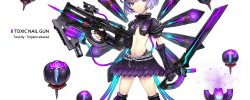Bakuman: When Two People Can Be More Creative Than 50 People Combined

With the Nanamine arc coming to an end this is a good opportunity to discuss a very peculiar skill that a lot of main characters in shounen series lack but is essential to being a main character in Bakuman – creativity.
Nanamine’s “Army of 50”
Here’s a seemingly simple logical query: if two people are better than one won’t 50 people be much better than two?
In terms of brute force, productivity, economical power and connections 50 people easily topple two. But creativity is a different beast. It’s a quality that is enjoyed by the many and owned by the few. The third season of Bakuman shows this splendidly with the Nanamine arc. As it begins it throws our protagonists Mashiro and Takagi in a creative battle against Nanamine. Of course Nanamine is not alone – he is using an internet chat room to interact with 50 designated people and create his manga according to their advice. His decision to share his manga with so many people stems from his belief that “more is better”. But as we soon find out there are few merits and many disadvantages to having such a big staff. It’s hard to strike a balance between people even when working in small groups. Furthermore when working on a concept as part of a group it is crucial to assign responsibilities and define a clear work pattern. In theory Nanamine could have created something amazing if only he could closely examine his manpower, decide which aspects should be handled by which personal and then be the glue that binds all the separate groups together.
But Nanamine chose to use the internet and as such only had the illusion that he is working on a personal basis with the people he chose. In reality he could not gauge the real quality or zeal behind the usernames that “advised” him; not that he even tried to do that in the first place. Instead of guiding his “army of 50” and craftily allowing each and every one of them to work on his or her best field he ended up conducting a cacophony of untuned instruments.
The power of two
Taking a step back and looking at the Nanamine arc from a real world perspective it’s easy to see why such a method is never used: a novice mangaka (manga artist) could never split his money between 50 other people and still have enough money to feed himself, decision making in such a big group becomes a daily chore that halts the production instead of hastening it, there are copyright-related legal problems involved since the publishing company is in fact publishing a manga made by 51 people instead of one, and the list goes on. However Bakuman chose not to show any of these problems and instead focus on the creative process behind the creation of a manga made by 51 people. Bakuman does this because by definition it has always been a series about the artistic prowess a mangaka needs in order to create and sustain a manga. From a creative stance even 50 people cannot equate to one, not to mention two, gifted artists. Even if there were gifted people among Nanamine’s group the anonymous nature in which the group worked would have prevented them from expressing themselves in a constructive way. Like Takagi himself cleverly pointed out: when you have so many people working on a single source they tend to pull in different directions and eventually lead to inconsistencies and imperfections in the manga.
History has shown that most mangaka do their best alone or in a small group. The biggest, and probably most renowned, exclusion to this rule is Clamp – the all-female mangaka team that initially had seven members in it. Clamp’s crew later diminished to four and those four still work together to this day. However, even among the members of this relatively small group each member either has a designated series or role (drawing, background, tone, etc.). So even small groups need to be organized in an effective way in order to sustain their productive and express their creativity.
Managing a real team
In the real manga industry resources are divided between several people, just not on such a large scale. At the very least a mangaka has one more person to work with and consult – his or her editor. Editors can provide close guidance or watch the artist from afar. Some mangaka despise their editors while others confer with them exclusively. If the mangaka has assistants they can pitch in to contribute ideas or criticize the final product. After the manga chapter is finished and handed over to the editor it still is skimmed by the publisher’s in-house editorial committee. The editorial committee seldom ask for changes in the plot department or drawing style, but may demand that the mangaka redraw a specific controversial or inappropriate page. So even a regular manga with one mangaka behind it is inevitably checked multiple times and is seen by many before it hits store shelves. But we must not forget that without the talented mangaka that think up the manga and draws it even those steps would not have been possible. In its essence manga really is a medium that revolves heavily around a few gifted artists and their creative ideas.















